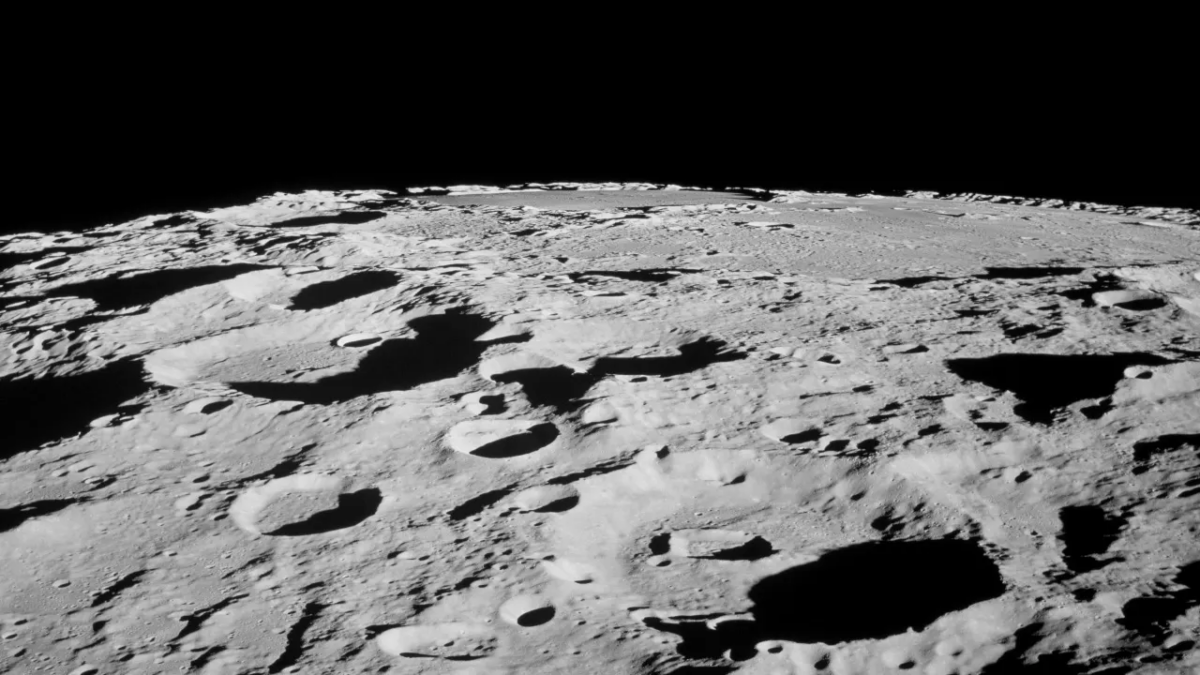
Unlike Earth’s life-sustaining blanket of air, the Moon has but a thin wisp of an atmosphere. Now, a new study using samples retrieved by the Apollo missions more than 50 years ago is helping researchers gain clues into both how our satellite’s thin atmosphere formed and how it has evolved over billions of years.
“The lunar atmosphere is extremely thin and very different from Earth’s atmosphere. It is essentially a sparse collection of atoms, so tenuous that they rarely collide with each other,” says Nicole Nie, a planetary scientist at MIT and lead author of a paper, published today in Science Advances, looking at how the lunar atmosphere is generated through a process called space weathering.
Comparing isotopes
Space weathering is an umbrella term encompassing several processes, such as interactions with the solar wind or the vaporization of meteorites upon impact. For example, as micrometeorites such as dust particles strike the surface of the Moon, they vaporize and kick up atoms that contribute to the atmosphere.
But it’s hard to tell how much any given type of space weathering contributes just by looking at the Moon’s barely-there atmosphere. It turns out, though, that the two elements in particular, potassium and rubidium, are particularly sensitive to the different types of space weathering that might affect them.
The study doesn’t look at the atmosphere itself, though — instead, it examines the chemical makeup of samples of the Moon’s soil brought back by astronauts. The team took the lunar dust and applied an acid to refine out the potassium and rubidium. These were then superheated by a plasma, and the resulting gas was examined to determine the elements and isotopes present. (Isotopes are essentially different “versions” of elements, with the same number of protons but differing numbers of neutrons in the nucleus.)
The team saw that heavier isotopes were the most dominant, pointing to a significant contribution to the Moon’s atmosphere by micrometeorite vaporization. In fact, about 70 percent of the potassium in the Moon’s atmosphere appears to come from micrometeoroids, compared to about 30 percent from solar wind, according to Nie.
Transient air
When micrometeoroids strike the lunar surface, they become superheated and vaporize into atoms. Some of those atoms hover above the Moon’s surface, creating its tenuous atmosphere. But because the Moon has low gravity, some atoms eventually escape into space, while others fall back to the ground.
“The lunar atmosphere is thus a transient environment, consisting of atoms temporarily lingering above the lunar surface, rather than forming a stable atmosphere like Earth’s,” Nie says.
This is how looking at potassium and rubidium in lunar soil samples could shed light on the lunar atmosphere. By modeling the way different space weathering processes produce different isotopes of these elements, the team could extrapolate what the atmosphere had looked like, based on the atoms that fell back to the surface.
Nie’s study examined 10 samples from five landing sites. Future missions could obtain more samples from a broader range of terrain to better understand the atmosphere, in addition to the benefit of making in situ measurements. In 2013, the Lunar Atmosphere and Dust Environment Explorer arrived at the Moon for a several-month mission in part to study the ephemeral atmosphere, but there has been little follow-up on the subject since.
While this study focused on just potassium and rubidium, Nie and her colleagues hope to explore other elements’ isotopes to better understand the mechanisms at play. “Different isotopic systems offer unique insights into various aspects of space weathering processes and expanding our analysis to include these will provide a more comprehensive understanding,” she says.









